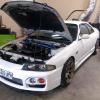Most Suitable r34 model for a GT-R Conversion
Announcements
-
Similar Content
-
Latest Posts
-
Unfortunately I'm a Gen Z (Don't hold it against me pls) but I'm also retarded so surely they cancel out? But yes definitely agree where else can you find people helping and bullying each other for the past 20+ years with a sprinkle of "hottest girlfreinds or wives of sau" in there too for some downtime after all the learning.
-
That sounds way too sensible, I may need to dumb it down before I try it.
-
By Dose Pipe Sutututu · Posted
Try swap your alternator, someone else recently had a similar electrical issues with their 150A alternator too, swapped it, all the voltage issues went away. -
By Dose Pipe Sutututu · Posted
I dare say all of us active SAU retards (no Gen Zs reading this right?) are probably more knowledgeable than the entire globe on Skyline shit boxes. -
Don't turn down the limit yet. Put a mechanical pressure gauge on the car in the same spot and go and prove it.
-







Recommended Posts
Create an account or sign in to comment
You need to be a member in order to leave a comment
Create an account
Sign up for a new account in our community. It's easy!
Register a new accountSign in
Already have an account? Sign in here.
Sign In Now